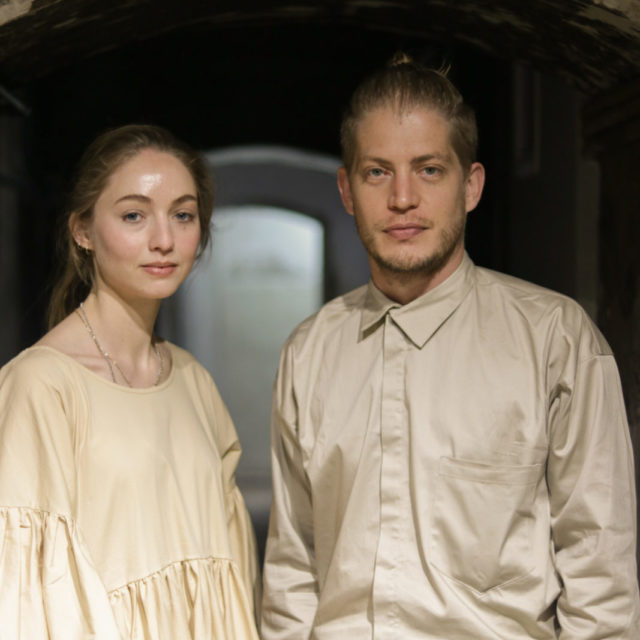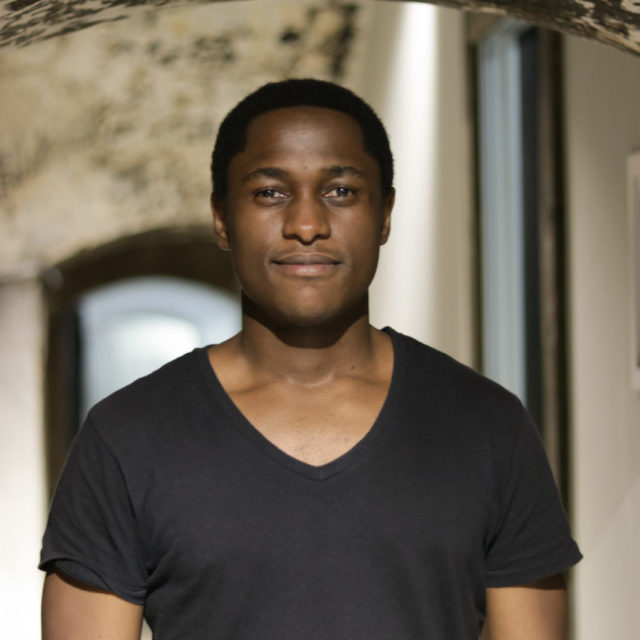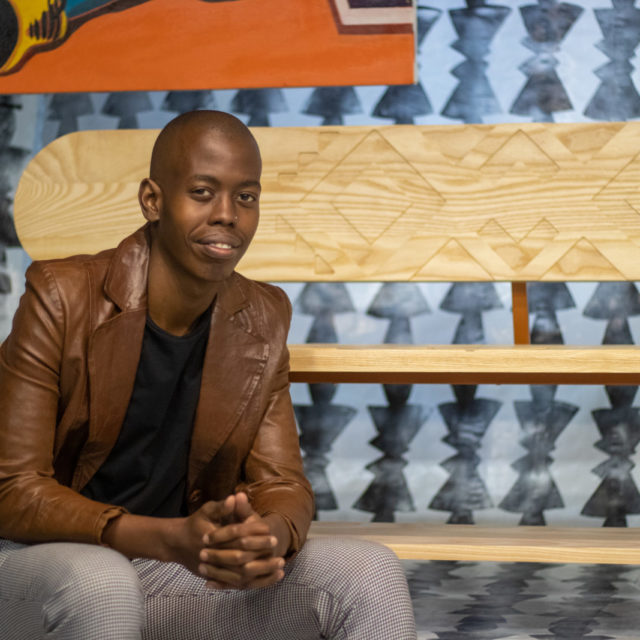Nando’s HYD 2020 Winner and Finalists
Meet the winner, and his fellow finalists
Katlego Tshuma

Age: 29, Johannesburg
Katlego Tshuma is a multidisciplinary designer, covering illustration as well as motion design. For his entry, he looked to the traditional African mat for inspiration. Its name, the Sangu Bench, is the Xitsonga name for a traditional African grass mat. “The Sangu Bench is inspired by the organic forms found in the movement and shape of the traditional grass mats which have been used across various African cultures as carpets, mats, screens and room dividers,” says Tshuma.
“Throughout the research and design of the bench, I kept true to the brief by creating areas that allow for two people to sit and still maintain socially distancing. I created isolated areas on a bench by incorporating the traditional mat as a divider and a back support,” he adds.
Anele Vezi

Age: 25, Durban
Durban-based Anele Vezi is a young interior designer, co-founder of Vezarra, a furniture design brand he co-founded with his brother. He was also part of Design Indaba’s Emerging Creatives for 2020.
His HYD entry, the Mbokodo Bench, takes its inspiration from Zulu women’s traditional attire, referencing items such as Isicholo (hat) and Isgege (skirt).
“The Mbokodo bench is a tribute to my mothers and sisters and every other woman in the spirit of women’s month. To the young girls and women we have lost due to gender-based violence and the lives we have lost to this pandemic. This piece hopes to signify femininity, culture and a coming of age. This piece aims to personify the courage and strength of a woman. Though she may be face with adversities she will rise above,” says Vezi.
Bebe Donnolly

Age: 21, Cape Town
For her entry, based mixed media artist and designer Bebe Donnolly designed the “Fluid Spine Bench”, made out of a combination of timber, cork and Perspex. The design features stacking and spinning parts which make it not only visually exciting, but fully convertible to allow for social distancing while it is necessary, and to be used a regular bench once it is safe to do so.
“I wanted to design something that not only functions as a bench but that is also visually exciting, artistic, and follows the COVID 19 protocols. I also wanted the bench to be customizable as I know that most Nando store interiors are different and exciting,” says Donnolly.
Christian Botha

Age: 23, Johannesburg
Designer Christian Botha’s entry for HYD, the Shongololo Bench, takes its inspiration from the millipede, or the shongololo as it is known known in Zulu. Much like the shongololo itself, the design contracts and expands when necessary, although not literally. This is achieved by placing wooden stools over the red rope – which is both decorative and a way to maintain social distancing – therefore crating more seating space.
“Much like the current times we find ourselves in, there are many places in nature where things seem apart but are still connected. One such example is the shongololo or millipede. While the different components of its shell are divided, they interlink and are still together. They can’t be a solid piece for it to be able to move. Drawing inspiration from its form reminds us that sometimes we need space between us in order to move forward,” says Botha.
Darren Myburgh

Age: 26, Johannesburg
Darren Myburgh’s social distancing bench is made from plywood pieces, held together a threaded bar and re-enforced with a hollow round bar. The screens that facilitate social distancing are easily removed when not necessary. “They are made from a wooden frame with a Perspex inlay so that customers don’t feel completely isolated and can still see each other,” says Myburgh.
Jeanne Scholtz & Jan de Wet

Age: 30, Cape Town
Jeanne Scholtz and Jan de Wet are both architects and founders of the multi-disciplinary Studio AN. Their entry, the Thread Bench takes its inspiration from African Beadwork. “Beadwork has played a significant role in African culture both historically and in modern times. We see the bench as a series of beads on a string. The image of threading individual beads onto a string informs the spatial ideas behind the bench. The bench is divided into singular seats (the beads) and a steel framework (the thread). The beads can be moved apart or pushed together while always being connected,” says the duo.
While social distancing is required, the individual seats can be spaced apart but once it is safe to do so, they can be pushed together.
Ngwako Matloha

Age: 28, Pretoria
Designer Ngwako Matloha’s unmissable entry is brought to vivid life by his use of peacock feather patterns. “When I was in university, our campus was a hotspot for peacocks. They would always be roaming around campus. I grew fond of them. What I also found interesting was how they would claim their space by spreading their beautiful tail feathers. I also found that peacocks have a long lifespan compared to other birds. This felt like a fitting representation of beauty, social distancing and long life,” says Matloha.
Sipho Twala

Age: 30, Germiston
For his HYD entry, The Boni Bench, Khwebula Arts founder designer Sipho Twala looked to the traditional Borana Bori headrests used by the East African Somali herders. “The herders hang it on the left or right side of their belt,” says Twala. His design is built from solid white oak, with a laser engraved pattern. In order to maintain social distancing, the bench has individual seats, resembling the headrests. Once social distancing is no longer necessary, the seat can simply be turned upside down and into a regular bench.
Siviwe Jali

Age: 29, Durban
Siviwe Jali is the founder of Durban based Umugqa Studio. And for their entry, they designed the Cuphisa Bench. In isizulu, cuphisa is a verb that means ‘to set a place’ or to ‘take a seat’. “The concept of the design is inspired by the act of one person asking another to create space for them to sit. This act usually happens in public or shared spaces with limited seating. It is inspiring that a small act of generosity and kindness could have such an impact. Creating space for each other,” says Jali.
The patterns that bring Jali’s bench design to life go further into Zulu culture for inspiration, referencing the popular Zulu sandals through geometric patterns as well as the choice of colour, red, black and white.
Thando Nxelelwa

Age: 26, Johannesburg
Johannesburg based industrial designer Thando Nxelelwa’s “Space Bench” entry is a modular concept, with pieces of wood that can be removed, or simply moved into a different position in order to encourage social distancing. “My concern is in retail spaces, such as restaurants, social distancing in enclosed spaces with eager customers will become tricky to maintain in the long run. It is vital to turn to furniture to compile with the new norm not only to curb the spread of the coronavirus, but to also inspire new ways of designing products a customer will feel comfortable to use,” says Nxelelwa